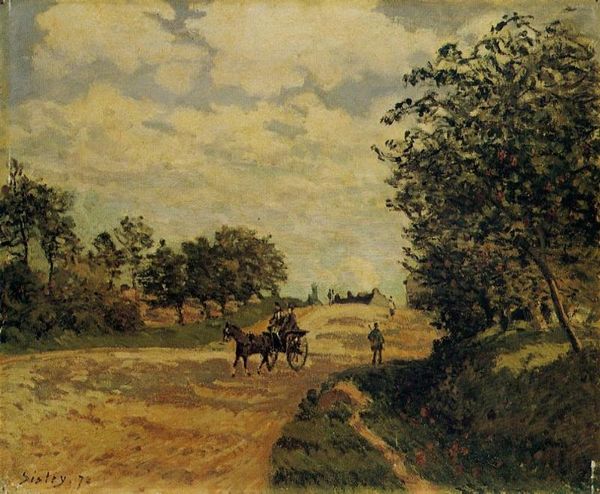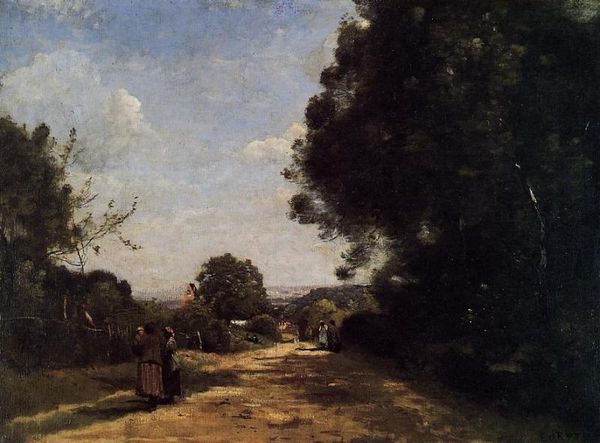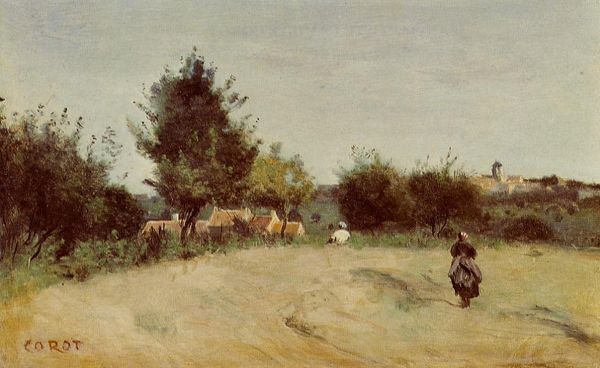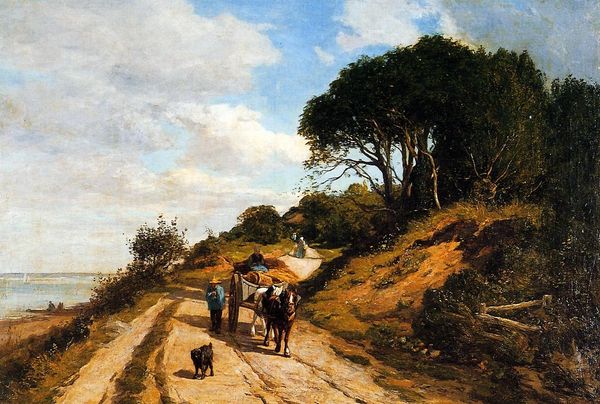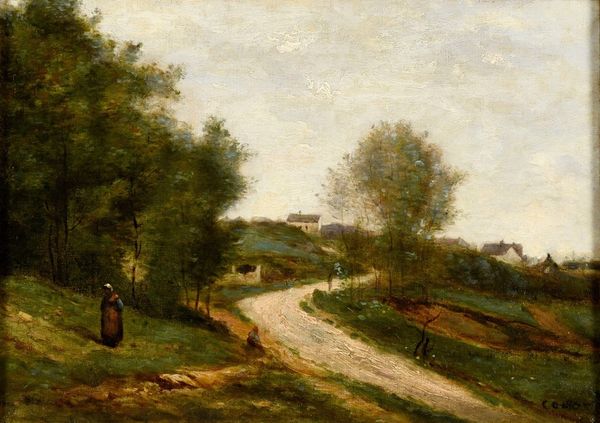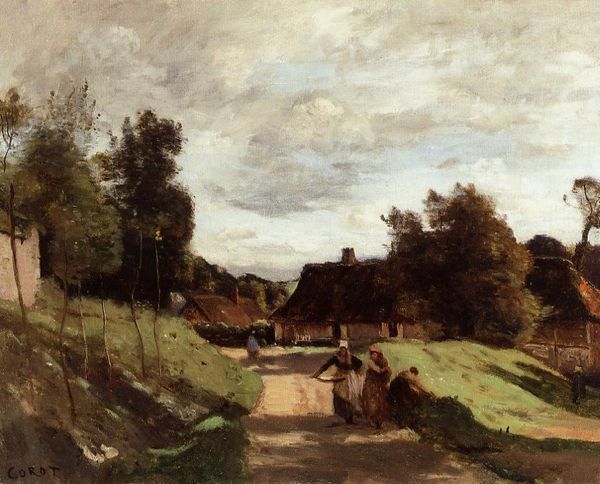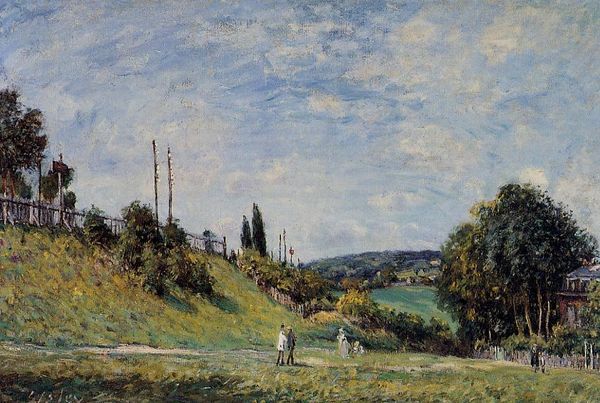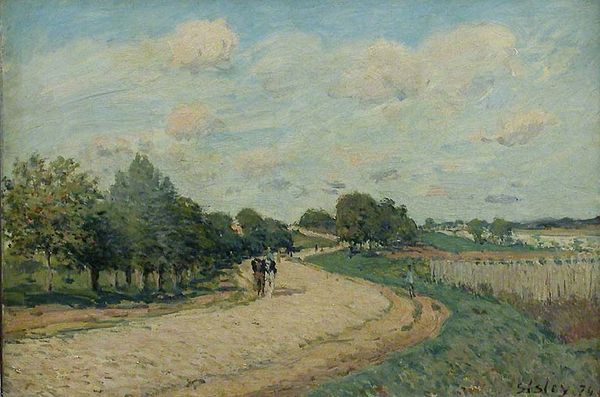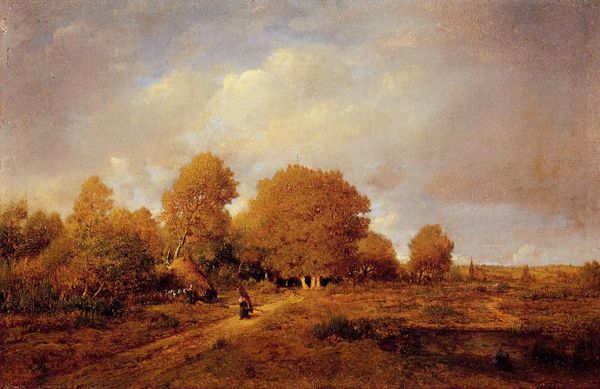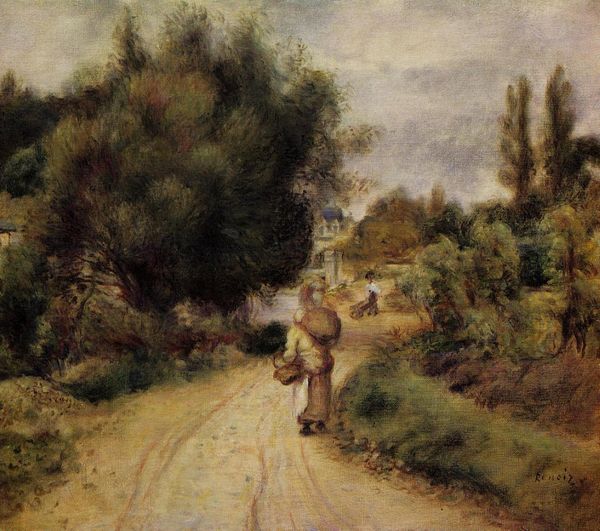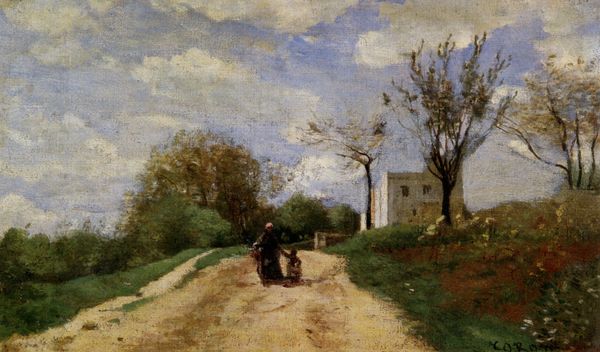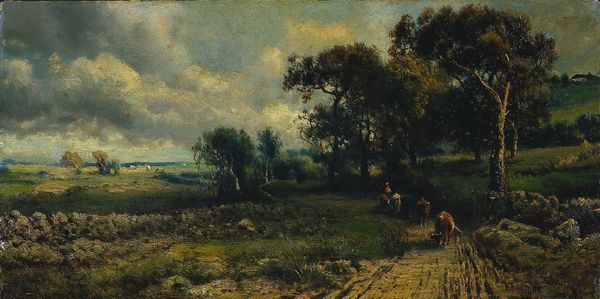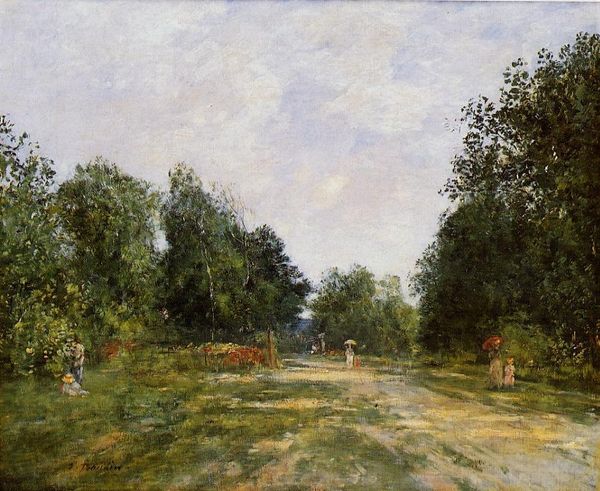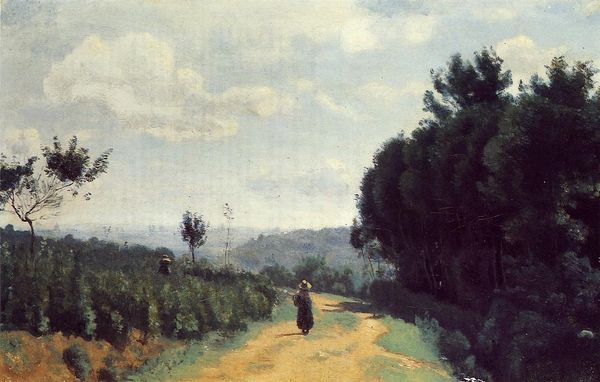
Dimensions: 34 x 49 cm
Copyright: Public domain
Editor: Here we have "The Road to Sevres," an oil painting by Camille Corot, from 1859. It feels almost like a memory, hazy and soft. What can you tell me about it? Curator: Corot painted "The Road to Sevres" en plein air, a practice that gained popularity in the mid-19th century. This allowed artists to capture the fleeting effects of light and atmosphere directly from nature. Sevres, of course, was and still is the site of a royal porcelain factory. How does this connect to French society at the time? Editor: Well, the French revolution sought to dissolve that elitist power structure, which, as an institution, must've felt threatening to a lot of artists. Does this painting feel like an argument to those ends? Curator: Not explicitly. However, the democratization of art and the shift away from solely aristocratic patronage had begun. Corot and his contemporaries began finding subjects in everyday life rather than solely in mythological or historical narratives commissioned by the upper class. How might this affect the landscape genre? Editor: That's true, it doesn't depict something biblical or from ancient stories; just folks on their way down the road! It looks so ordinary. Before the shift, landscapes always functioned as a backdrop. They might've represented something moral like, beauty, order, things like that. This doesn't have an overt symbolic connection to, say, revolution. What does it all mean? Curator: It reflects the evolving values of French society and the burgeoning middle class seeking representation in art. This new appreciation for "ordinary" subjects meant the social role of art was beginning to be accessible to more people, shaping our contemporary understanding of art. And to my mind, there is little difference to how art institutions have operated in the 20th Century. Editor: That makes so much sense! I hadn’t considered how the rise of "everyday life" in art reflects the rising power of the everyday person. I see now how much this tells us about society at that time. Thanks! Curator: A fascinating artwork seen through a socio-political lens. Thanks!
Comments
No comments
Be the first to comment and join the conversation on the ultimate creative platform.
